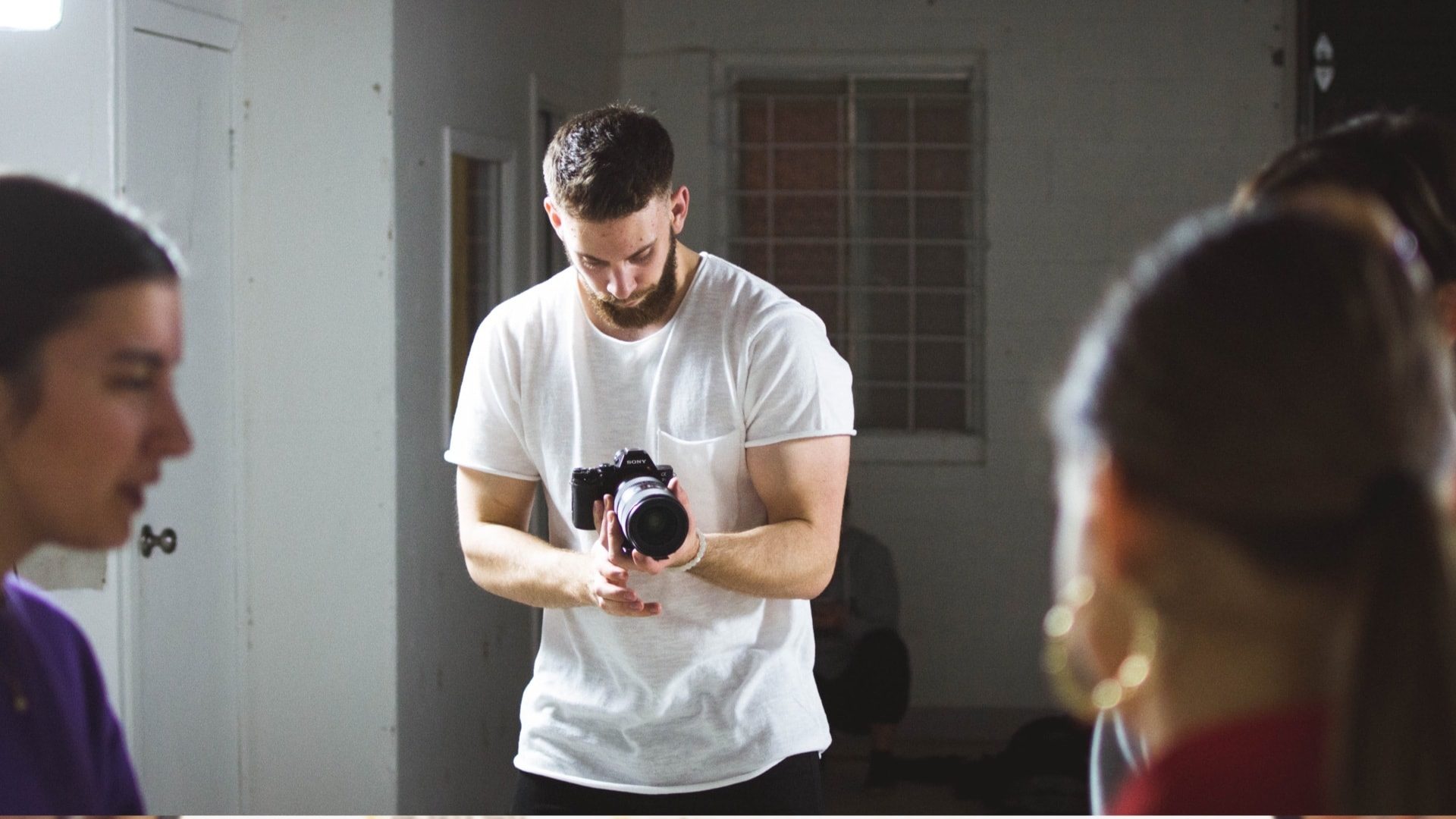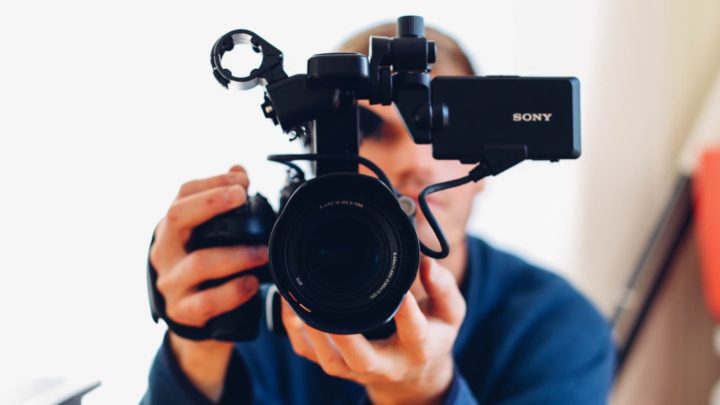On a ship, the Captain sets the course, and the First Officer makes it happen. On a set, the director sets the vision, and the first assistant director ( shortened to 1st assistant director, “first AD”, or “1st AD”) turns his dreams into reality.
If you want to learn how to become a first assistant director and get a chance to yell “rolling sound”? This is what you need to know.
What is the Assistant Director Job Description?
So, what does an assistant director do? Essentially, the assistant director’s job is to run the set, freeing the director up to focus on their creative vision. They are the kings and queens of the below-the-line crew, ensuring the film actually gets made.
In years gone past, the 1st AD job was a crucial step in how to become a director. Alfred Hitchcock worked as a first assistant director before going on to be Alfred Hitchcock. These days most assistant directors go on to become producers or production managers.
Patty Jenkins, Gal Gadot, and first assistant director, Phil Booth, on Wonder Woman (2017)
1. Scheduling
The first job of the 1st AD is to create the daily shooting schedule, and then make sure the production actually sticks to it. This not only requires a good sense of timing and a willingness to have an authoritarian attitude, but a careful understanding of the people you’re working with.
It starts in the pre-production process, where you write up the script breakdown and work with the director to determine the shot list, along with what will be required for each shot -- make-up, steadicam, costumes, stunt coordinators, etc.
From this breakdown, you create the shooting schedule, ideally using specialized breakdown software like StudioBinder, although there are several excellent free breakdown templates on Google Drive you can use as well.
The key is to balance realism with the financial needs of the shoot: a good first AD knows that time is money, but also knows that haste makes waste.
2. Running the Set
On set, the director will be juggling a thousand ideas at once, from shot placement to working with talent. They won’t have the bandwidth to answer questions about where catering should set up, put a fire out for the gaffers, or send the production assistant out with some petty cash to grab some extra bottles of water.
That’s the assistant director’s job.
Assistant directors have a reputation as being authoritative and mean. To be fair, that is part of the first assistant director job description.
However, the first AD isn’t supposed to be a jerk so much as they are meant to be stern. They’re responsible for keeping everyone on track, and that can require a firm hand. They also have to be approachable.
That’s because any and all problems make their way to the first AD. All information inevitably runs through the assistant directors, and that means they need to be on good terms with everyone. Solid communication skills and a handle on on-set walkie-talkie lingo help too.
The director may not need to know that the generator’s having problems unless it will delay the shoot, but the gaffer and sound supervisor certainly do, and the 1st AD will make sure that they do.
3. Management and Communication
On more well-heeled productions, a 1st AD may also oversee a second assistant director, a second second assistant director, and even a third assistant director to help manage increasingly large and complex shoots.
Even without those extra hands, a first AD is responsible for managing the department heads and runners. The director should only get involved in creative matters and when absolutely necessary for the efficient running of the set.
The assistant director is also responsible for calling out commands to the entire set, such as “Rolling sound” or “Quiet on the set”. Some directors will even have their 1st AD’s call out “Action” and “Cut”. If there are background actors on set, it is the 1st AD’s job to carry information to them from the director per SAG-AFTRA rules.
In all things, the 1st AD works for the Director to ensure that his or her vision is carried out. There is one vital exception to this rule, however.
4. Safety
Several recent tragic accidents in the industry have driven home the importance of safety on sets. Many things can go wrong, and it’s the job description of the assistant director to keep everyone, and everything, as safe as possible.
This is one area where a film AD works for the cast and crew, not the director and producers. If the director demands a shot the 1st AD knows is unsafe, it’s their job to put a stop to it.
This can be uncomfortable. After all, the assistant director’s salary depends on making the director happy. However, it is arguably the most important job the 1st AD does on set. If you want to know how to become an assistant director, you start by standing up to authority.
5. Picking up the Slack
There are a few duties that, on more well-funded sets, will typically fall on the second or even third assistant directors. However, if you find yourself on an indie shoot, you may have to pick up the slack.
How to be a 2nd assistant director is a topic that merits its own article. However, one job deserves special mention.
Before every day of filming, a call sheet goes out to everyone on set. It includes who needs to be on set, what needs to be on set, when they need to be there, and what’s going to happen on that day.
A clear, punctual call sheet is one of the keys of a happy, efficient crew, and if there is no 2nd AD, it falls on the 1st to make sure it goes out. Production software like StudioBinder can generate a call sheet directly from your shooting schedule with a minimum of fuss.
For what it’s worth, it’s also good for building a budget if you’ve been dragooned into being the line producer as well as the 1st AD. No one said the job was easy.
How to Become an Assistant Director?
There are two ways to find assistant director jobs for film and tv. The first is job boards like Production Beast. The second is that Hollywood classic, good networking.
Either way, though, no one gets starts at the top without first taking their licks. Your first step to becoming a film AD should be to get on a set, any set, usually as a production assistant or a runner before working their way up to the assistant director jobs.
Legendary first assistant director, Dave Tomblin (left), on the set of The Empire Strikes Back (1980)
The traditional path for a 1st AD is through 2nd and 3rd AD, but it’s not the only way to become an assistant director. Take whatever set job open up to you, and learn as much as you can while you’re there.
Nothing makes a costume designer feel better than knowing you’ve put a little time in a costume shop, after all.
As you work your way up the ladder, make yourself as indispensable as possible. Not only will this look good on your resume when you apply for assistant director jobs, you’ll stick in the memories of the people you work with.
A cinematographer with dreams of directing might remember how good you were on set and ask you to be their 1st assistant director when they get their first big break. That’s how you become a first assistant director.
What is a First Assistant Director Salary?
A first assistant director’s salary varies depending on what kind of shoots you’re working. Big budget studio features pay better than small indie shorts, naturally.
If you’re working on a union shoot, 1st AD’s fall under the heading of the Director’s Guild of America. An assistant director’s salary is therefore subject to the minimums laid out in the basic agreement negotiated with the major studios.
These minimums, including first assistant director salaries, are renegotiated every three years, so be sure to check the DGA website for the most up to date information.
Like all set jobs, being a 1st AD is ultimately a freelance existence. How much you make depends not only how good a job you do, but how many jobs you can find. In general, though, you can expect an assistant director salary to average out to $68,000 a year in Los Angeles according to simplyhired.com.
Wrapping Up
The first assistant director job is perfect for someone who is well organized, has a good sense of time management, and doesn’t mind being a bit of a hard ass. People skills and a loud voice (“Rolling sound!”) are a plus, too.
If you’re interested in moving up the ladder to first assistant director, you can search for open assistant director jobs on Production Beast. If you’re just starting to climb the ladder, you can also search for jobs as a PA or a Runner, as well as learn more about those positions here.
On the other hand, if you’re looking for a first AD to help make your dream happen, Production Beast has you covered too.
For more information on being a first assistant director, watch 1st AD Lydia Currie explain a day in her life or read about 13 ways you can become a better assistant director.
Any questions about what a 1st AD does? Any thoughts from seasoned pros about how to become an assistant director? Is there anything missing anything from the list of 1st AD duties? Start a conversation in the comments below.
Like this post? Share it!
"Essential Guide: How to Become a Killer First Assistant Director" #filmmaking #filmmakers






